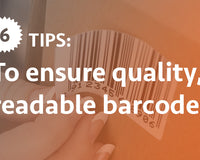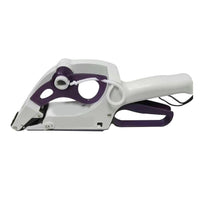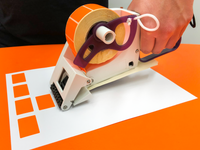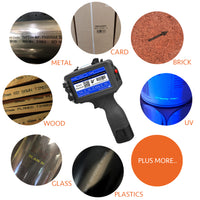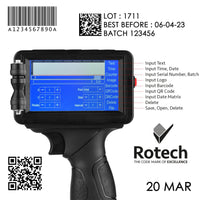When it comes to industrial coding, the terms ‘contact’ and ‘contact-free’ are often used. But what do these terms mean and what difference does it make?
In this blog we will discuss both methods and what they are best suited for in terms of applications.
There are 3 main coding technologies which are non-contact; continuous inkjet (CIJ), thermal inkjet (TIJ) and laser. On the other hand, thermal transfer is the most popular contact coding method, although hot foil stamping is sometimes still used.
The distinction between contact and non-contact coding is down to the way the ink is transferred onto the material. With both CIJ and TIJ, ink droplets are forced through nozzles with pressure, allowing them to travel a distance before hitting the substrate. CIJ has an impressive throw distance of up to 10mm. TIJ has a shorter throw distance, ideally substrates need to be less than 2mm from the printhead to achieve optimum results.
Thermal transfer printing (our contact-coding method of choice) works when heat is transmitted onto an ink-coated ribbon. The ribbon then transfers the print directly onto the substrate or label. In order for the printhead to touch the substrate, thermal transfer units need to be installed directly onto a packaging machine or labelling system.
Here we will outline some common coding applications and whether it would be better to opt for a contact or contact-free printing method.
Scenario 1: Printing small amounts of text/data
When only a small amount of information is to be printed, such as date codes or batch numbers, a contact-free technology is likely to be much more cost-effective.
Thermal inkjet printers are perfect for these kinds of applications, as they are clean, compact and extremely easy-to-use.
Thermal transfer, although capable for the job has a much larger printhead size – this, combined with the cost of ribbons and inks makes it an unappealing option.
However, the type of substrate being printed will also be a factor which determines which technology is best suited. For example, particularly glossy surfaces may require a contact-method.
Scenario 2: Filled packs
Although thermal transfer printers are ideal for coding flexible films and packaging as it is being formed, they struggle with packs that have already been filled, as they are not flat.
It is for this reason that we would recommend a non-contact coding method for this type of application.
Scenario 3: Glossy or shiny packaging
Thermal transfer coders have no problems when printing onto glossy or shiny surfaces because of the way that the heat is applied to melt ink onto the material, always leaving a clear, durable print.
Historically, thermal inkjet technology struggled to print and adhere onto non-porous surfaces, often smudging on particularly shiny surfaces. However, due to recent developments in ink formulation, TIJ can also produce a crisp, durable print on most non-porous materials, even previously problematic substrates such as polyethylene, cast PP and polyester/PET.
Scenario 4: Machine readable codes
Thermal transfer printers are often used for the reliable printing of barcodes. For example, when producing EAN13 barcodes, thermal transfer is widely accepted as producing excellent quality results.
However, when printing datamatrix barcodes that usually only measure 10 x 10mm, TIJ offers the better solution. Thermal inkjet places pixels with more accuracy, and offers higher resolution printing than CIJ systems, making it the obvious choice.
Scenario 5: Substrates of varying thicknesses
This is often a challenge faced by pharmaceutical manufacturers when printing onto cartons. Typically, they will want to print date codes and lot numbers on the end of a carton, as well as some additional information along the body of the pack.
Where the two end flaps overlap, this creates a surface that is varying in thickness. Unless the coder can print all of the data on the area of the cartom that is double thickness, a contact coder will not be suitable for this application.
CIJ and TIJ, by contrast, can print over folds, seams, and different pack sections.
Scenario 6: Late stage customisation
Late stage customisation – buying pre-branded packs and overprinting variable information, such as batch numbers and date codes online and on demand.
Where that information remains the same, old school hot stamp/foil coding may offer a sufficient functionality.
However, nowadays, most producers want the ability to print unique codes onto every pack, bringing digital coding methods to the fore.
Where a large print area is required, thermal transfer is the technology of choice as it is available with print widths up to 8”.
In general, contact-free coding techniques are designed to print small amounts of text, although there are also large area inkjet printers that will easily print directly onto the side of an outer case.
These examples set out some typical scenarios, but in coding and marking, things are constantly changing – technology is always advancing and breaking down barriers.



